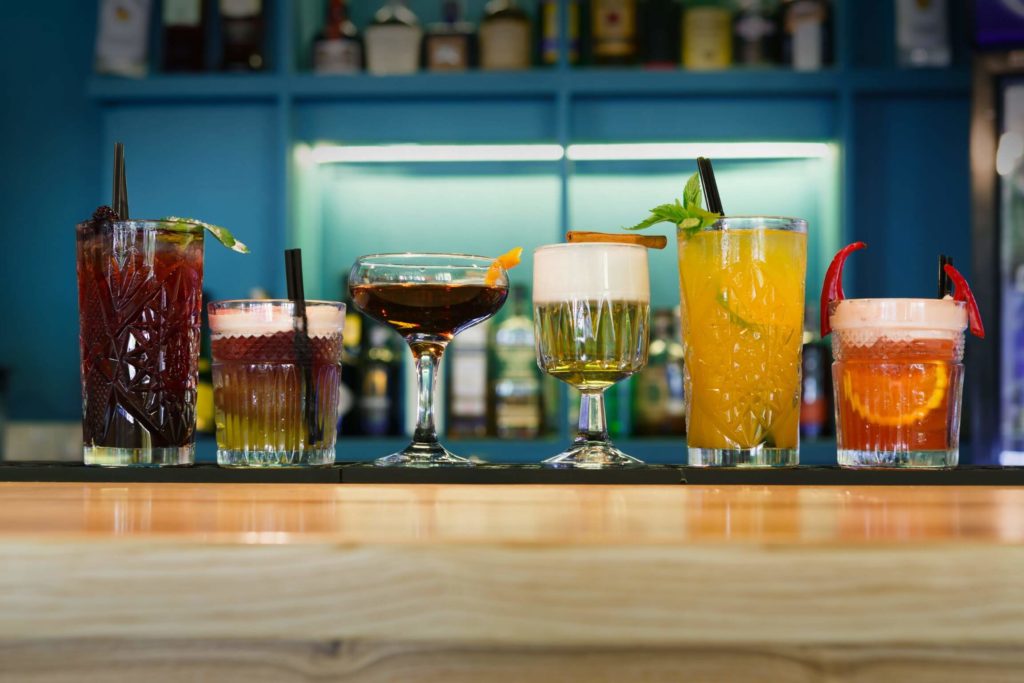When it comes to alcohol, it’s easy to see the extremes.
But what if you’re in the middle?
Americans are drinking more and more – and with disastrous results. Prior to the COVID-19 pandemic, the National Institutes of Health (NIH) reported alcohol-related deaths nearly doubled between 1999 and 2017. Millennials, once an age group noted for not drinking, have been dying of liver diseases caused by alcohol use at higher rates.
So it’s easy to see why people who drink might be wondering if they’re having too much. But although there’s scientifically established guidelines on what heavy and binge drinking means, that still leaves a lot of people in an area where they’re not sure if they’re drinking too much.
Some people have started calling it the Gray Area.

So What Is The Gray Area?
As an idiom, “gray area” refers to an area of uncertainty, where right and wrong aren’t as clear as they tend to be. Take lying: everybody wants to strive for truth in daily life. But what if telling the truth over something relatively minor like a friend’s appearance might hurt their feelings?
The term can also describe large parts of the spectrum of alcohol use: at one end you have social drinking, and at the other you have alcohol use disorder. In between is, well … kind of a gray area where the boundaries of what constitutes harmful drinking and what doesn’t aren’t as established.
Determining where you fit on the spectrum isn’t strictly a matter of counting how many times you drink during a week (although it’s a good idea if you’re concerned about your alcohol intake). It’s even harder if none of the traditional signs of heavy drinking aren’t applying to your specific case.
There are ways to tell, however … and interestingly, you might be sending some of those messages to yourself.
Asking Yourself If You’re In The Gray Area
We seem to be in the habit of dropping notes to ourselves from time to time. Here’s an example: web searches. Have you ever casually searched for phrases like:
- Am I drinking too much?
- What are the symptoms of alcoholism
- What are the dangers of daily drinking
Searching for subjects like that is a pretty clear sign you’re concerned about your own drinking. Same goes for filling out those quizzes about drinking habits. Okay, sure: you might not tick off every box, or even most.
But think about this: what made you take that test in the first place?
There’s other behavioral tells, too:
- Regularly drinking more than you planned to.
- Sneaky drinking, like swapping hard seltzer (or vodka) with water in a water bottle or using things like novelty flasks to disguise liquor.
- Drinking where you don’t really need to, like sipping wine while shopping or at a friend’s baby shower.
- Experiencing minor bad outcomes for drinking – instead of losing your job, maybe you came into work hungover once or twice.
- Realizing alcohol is an obstacle to doing the things you’d rather be doing.
You can see why it’s a tough call. While it lacks the health scares and the societal penalties of dangerous drinking, like damaged relationships, blackouts, and lost careers, gray area drinking is still enough to be disruptive to ordinary life.
Plus, it’s a gateway to alcohol use disorder. A lot of those behavioral tells we just mentioned are also warning signs of truly problematic alcohol use.

Getting Out Of The Gray
Changing drinking habits is never easy, and in some ways it’s harder when you’re not at rock bottom. If your drinking hasn’t caused you any serious problems – or maybe it was just that one time – why change?
The main reason is this: any drinking problem can turn into a drinking problem. Habits like regularly drinking too much, being secretive with your drinking and avoiding other activities in favor of drinking are all behavior patterns that can become addiction. Moreover, steady excessive drinking eventually turns into tolerance, meaning you’ll need to drink more and more to achieve the same effect. While being able to outdrink everyone in your social circle sounds fun, it’s a major red flag of alcohol abuse.
Bottom line, if you’re worried about or unhappy with your relationship with alcohol, it’s time to change. While there are multiple strategies to employ, try some of these:
Ask yourself why you’re drinking. Are you drinking because you think it’s the only way you can loosen up in public? Do you drink too much because you’re in a group of friends that also drinks too much? If you’re drinking because of stress, have you tried addressing the cause of your stress? All of these situations have solutions which don’t require drinking.
Distractions are helpful. If you manage to stop drinking – even for the night — try finding something else to do during the times you usually drink. Get into sudoku. Get an origami kit and start folding. Try gaming if that’s not usually your thing. If it’s still light out, try going for a walk or getting some exercise.
Learn how to refuse like a boss. Believe us, we know saying “no” isn’t always easy – especially with friends. But there’s ways to do it right:
- Maintain eye contact.
- Make that “no” clear and firm. You don’t have to shout, or say it in anger, but let them know you mean it.
- Order a drink with no alcohol.
- Feeling peer pressure? If it’s a friend, tell them to knock it off, you’re not drinking and that’s final.
- Forget any guilt – this is your life and yours alone. You can live it any way you want to.
That said, if the gray area is too much to get out of, consider professional help.
Sober Living: Where You Don’t Have To Say No
It can be a real challenge to find people who understand your new, sober lifestyle … especially if you’re currently in treatment. Finding a sober living arrangement to call home can be a literal lifesaver.
Which is why we developed SoberLivingNearYou.com. It’s a directory which puts thousands of sober living places at your fingertips. You’ll find a sober living solution for every budget, every need, and every location.
Start searching today!



